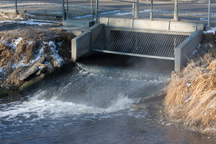Biochemical Oxygen Demand in Wastewater

All interested parties, particularly wastewater laboratory analysts, are encouraged to join in the development of a proposed new ASTM International standard on the use of biological oxygen demand in the analysis of wastewater.
The proposed new standard, WK23808, Test Method for 5-Day Biochemical Oxygen Demand in Water, is being developed by Subcommittee D19.06 on Methods for Analysis for Organic Substances in Water, part of ASTM International Committee D19 on Water.
According to John Hubbling, laboratory manager, Metropolitan Council/Environmental Services, and chair of ASTM Subcommittee D19.02 on Quality Systems, Specification and Statistics, biological oxygen demand is a tool for assessing the amount of oxygen that microorganisms will consume from a receiving water body when a given waste is discharged into that body.
"Biological oxygen demand is often equated with the strength of a waste," says Hubbling. "One of the major impacts of pollution or residual waste discharge, as from a municipal wastewater treatment plant, is oxygen depletion in the receiving water. If oxygen gets too low, fish and other organisms die, along with many other deleterious effects from anaerobic conditions."
Hubbling says that the test described in WK23808 will show the quantitative impact of waste on receiving waters.
"To the extent that most waste treatment consists of concentrating the microbial activity in aerated tankage before discharge, designers use the biological oxygen demand to size the tanks and the aeration systems," says Hubbling.
While biochemical oxygen demand results are used by design engineers building waste treatment facilities, Hubbling notes that WK23808 will be primarily used by discharge regulators such as the U.S. Environmental Protection Agency as well as by facilities that are regulated by discharge permits.
Wastewater laboratory analysts are invited to participate both as providers of technical input and also through active participation in the ASTM consensus process.
CONTACT
Technical Information: John Hubbling, Metropolitan Council/Environmental Services, St. Paul, Minn.
Phone: 651-602-8135
ASTM Staff: Brynn Murphy
Phone: 610-832-9640
 SN Home
SN Home Archive
Archive Advertisers
Advertisers Masthead
Masthead RateCard
RateCard Subscribe
Subscribe Email Editor
Email Editor